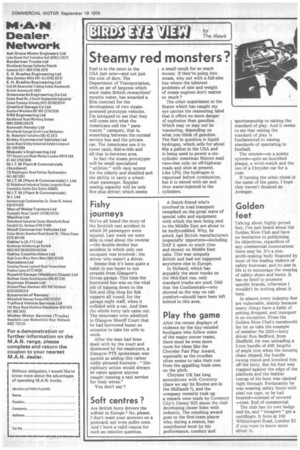Steamy red monsters
Page 47

If you've noticed an error in this article please click here to report it so we can fix it.
Fuel is in the news in the USA just now—and not just the cost of derv. The Department of Transportation, with an air of largesse which must make British researchers' mouths water, has awarded a $2m contract for the development of two steampowered prototype vehicles. I'm intrigued to see that they will come into what the Americans call the " paratransit " category, that is, something between the normal service bus and the private car. The Americans use it to cover taxis, dial-a-ride and all that in-between area.
In fact the steam prototypes will be small specialised " utilities " with easy access for the elderly and disabled and the ability to carry a wheelchair passenger. Regular seating capacity will be only five plus driver; which seems a small result for so much money. If they're going into steam, why not with a full-size bus where the inherent problems of size and weight of steam engines don't matter so much ?
The other experiment in the States which has caught my eye carries the reassuring label that it offers no more danger of explosion than gasoline. Which may or may not be reassuring, depending on what you think of gasoline. The fuel in question is liquid hydrogen, which sells for about 80p a gallon in the USA and is being used to power a sixcylinder American Motors mail van—but only on off-highway roads and sites at present. Like LPG, the hydrogen is vaporised before combustion, but it is mixed with air and then water-injected in the cylinders. by The Hawk
















































































































